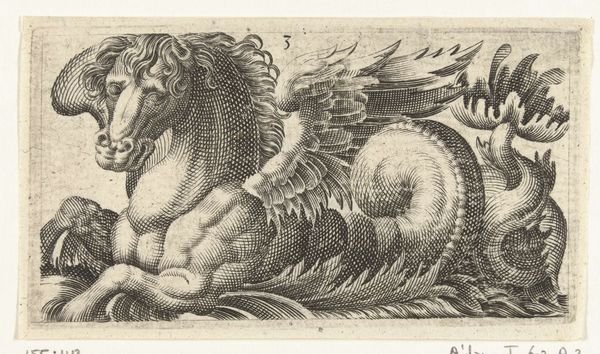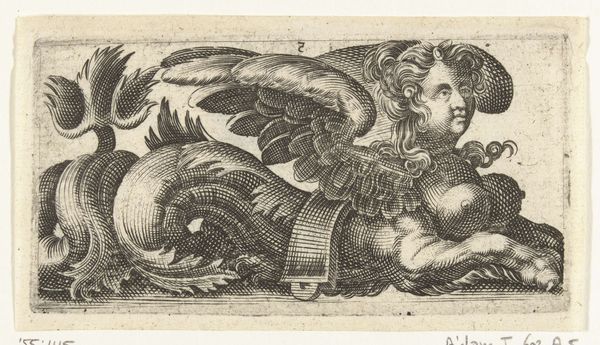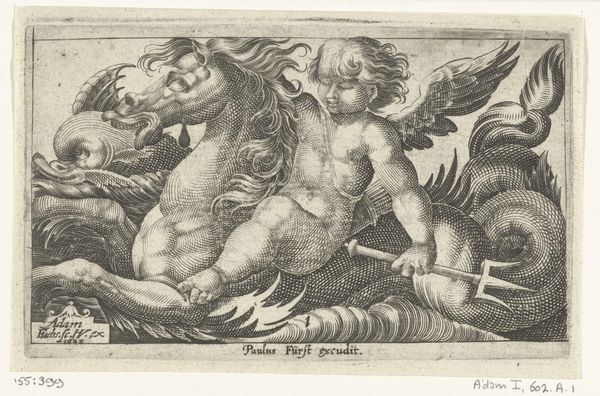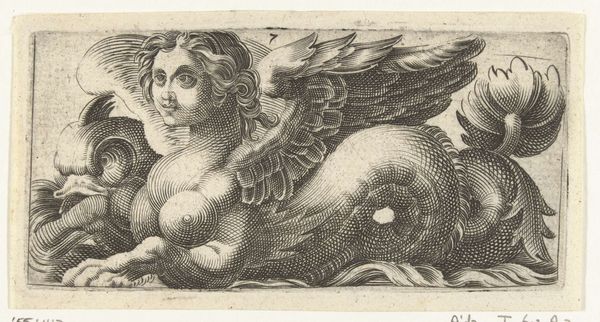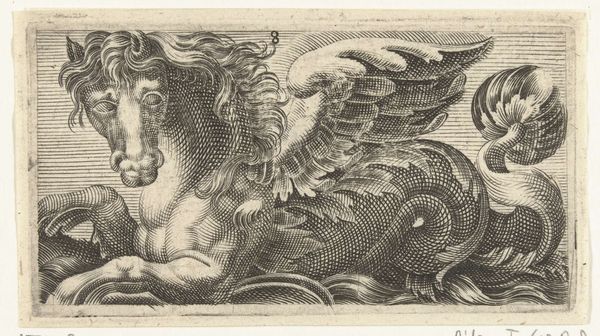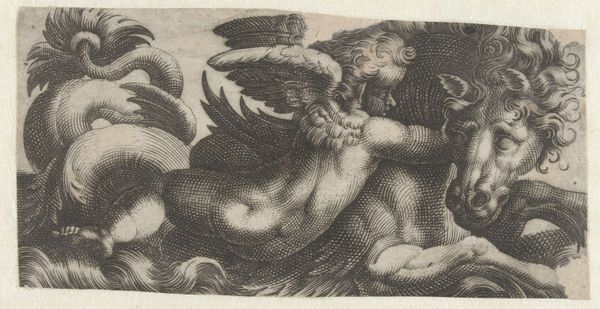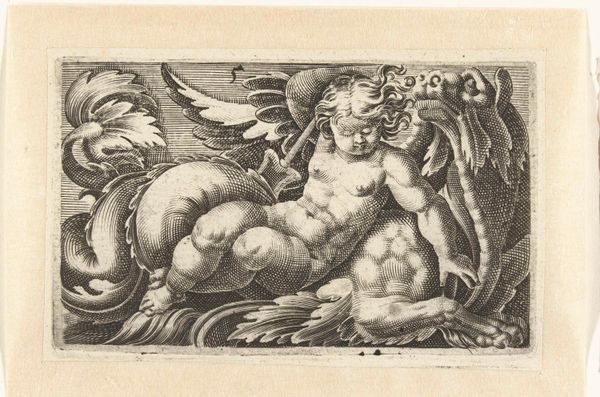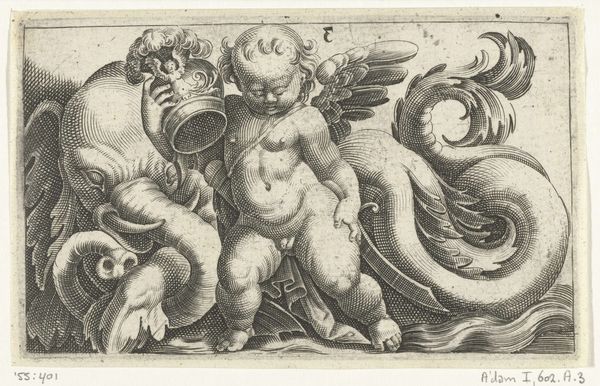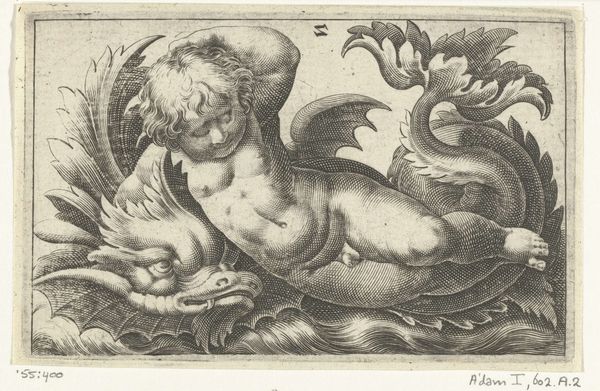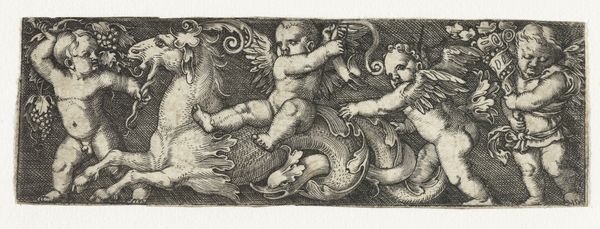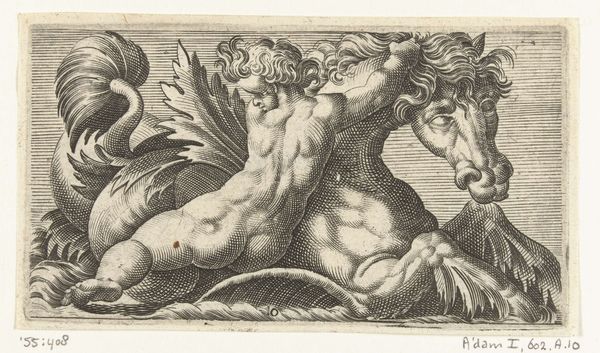
engraving
#
allegory
#
old engraving style
#
figuration
#
11_renaissance
#
line
#
engraving
Dimensions: height 57 mm, width 107 mm
Copyright: Rijks Museum: Open Domain
Editor: This is “Seahorse with a putto around his neck” by Adam Fuchs, from around 1526-1606. It's an engraving and it's quite small, but densely packed with detail. It seems like such an odd combination of creatures… what’s going on here? What do you see in this piece? Curator: It is a rather unusual image, isn't it? Immediately, the seahorse, or rather, sea-horse, reminds us of classical mythology, particularly Neptune's entourage. The putto, clinging to it, complicates things. How might we interpret this relationship? Are we seeing power dynamics at play, with the putto symbolizing innocence dominating the raw strength of the seahorse? Or, conversely, could the seahorse be a symbol of untamed, perhaps even dangerous, masculine power, being subtly guided by a gentler, more feminine force? Editor: Oh, I never considered gender in it, that is insightful! I initially thought it was just a whimsical fantasy image. Is there some social commentary that we could apply to it? Curator: Absolutely. During the Renaissance, images like these were often loaded with allegorical meaning. We might consider the socio-political climate of the time, the roles of men and women within society, the control, freedom, or oppression each experienced. Is the seahorse indicative of the patriarchy while the putto signals toward female influence, an assertion for equality, perhaps? Also consider, for whom was this image made? Who had access to engravings and what messages were they consuming through art? Editor: Wow, so much to unpack in a tiny engraving. Thank you. I hadn't even considered who the art was 'for' at the time, I'll have to remember that! Curator: It's a fascinating piece that invites us to think critically about the social constructs of the past. Each time we revisit it, we will have evolved to find a new, modern way of viewing it, informed by societal shifts that occurred since. Editor: Absolutely, food for thought!
Comments
No comments
Be the first to comment and join the conversation on the ultimate creative platform.

